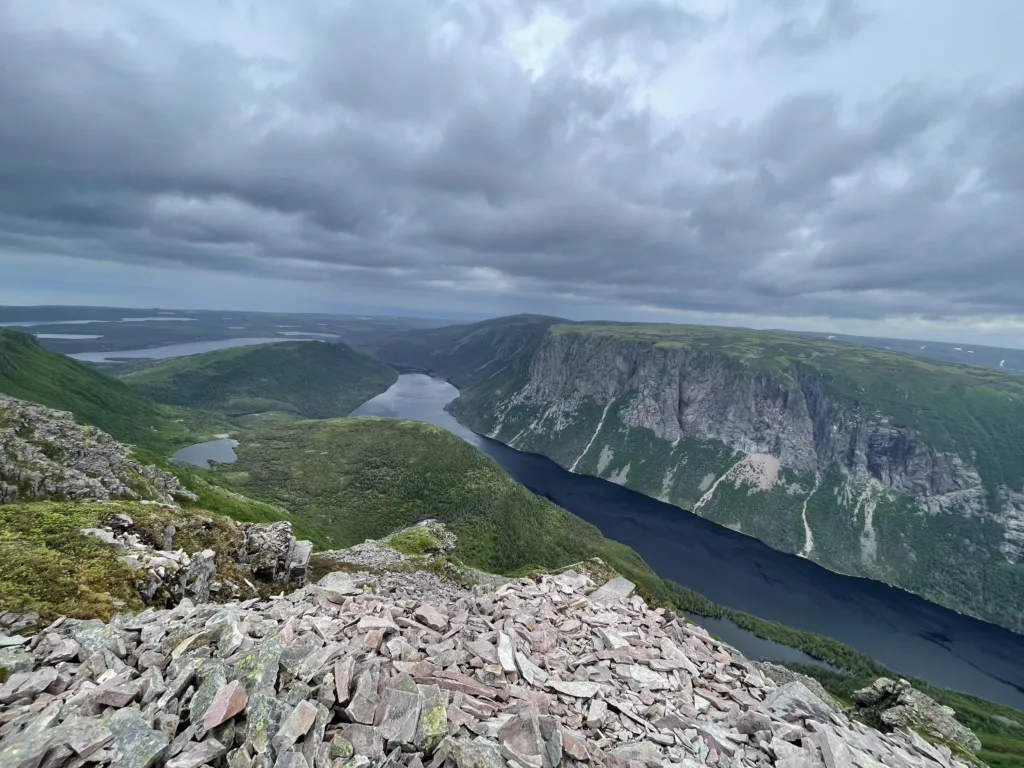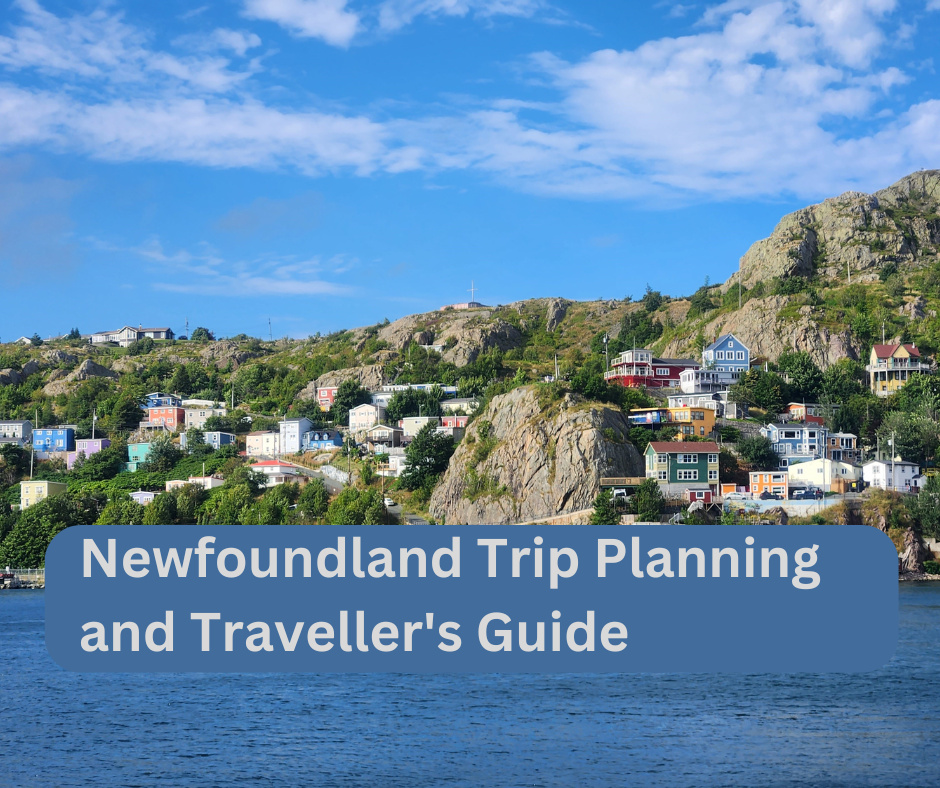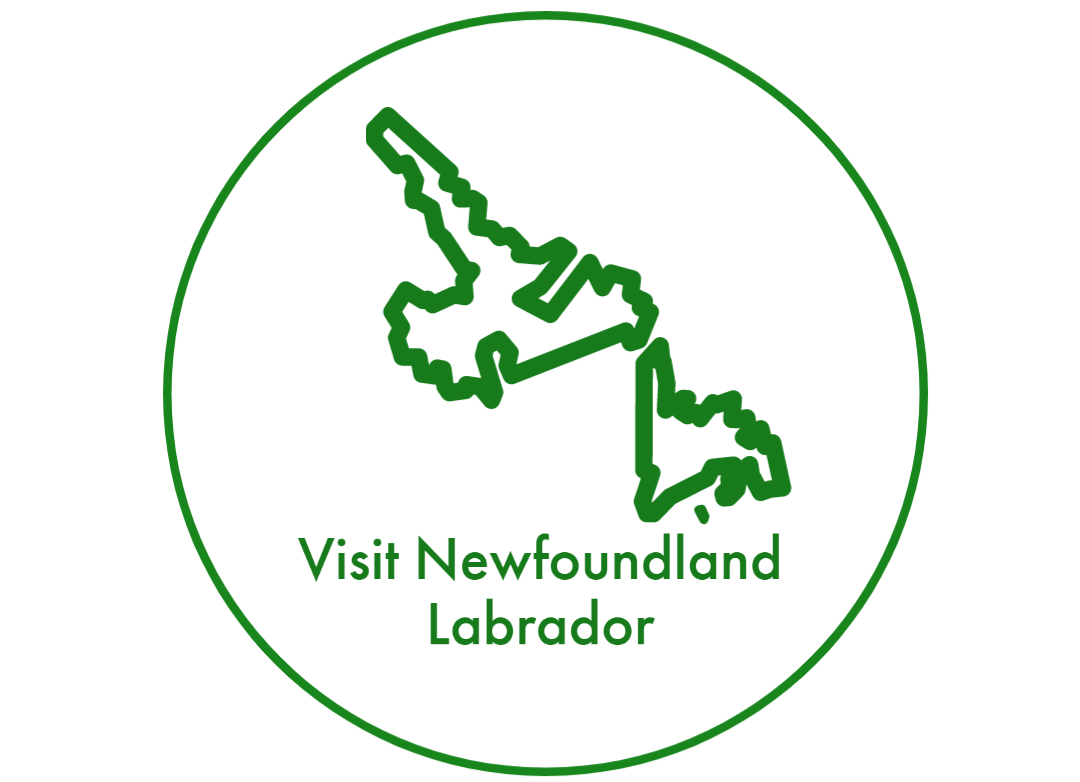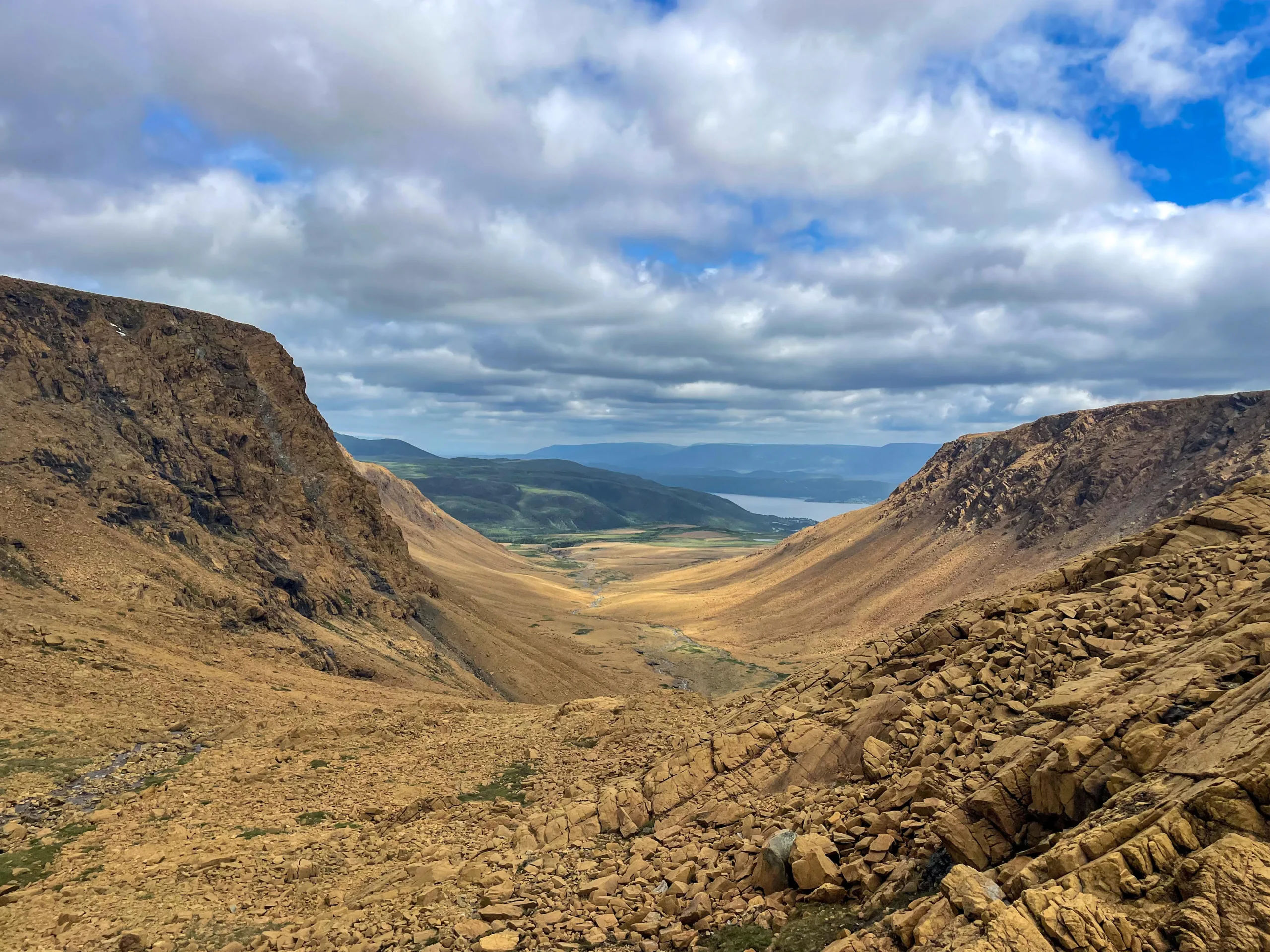Top-Rated Tourist Attractions in Gros Morne National Park
Discover the 17 Top-Rated Tourist Attractions in Gros Morne National Park. Located on Newfoundland great northern peninsula or the west coast, Gros Morne National Park is a Heritage site renowned for its dramatic landscapes, unique geological formations, and diverse ecosystems. The park covers an impressive 1,805 square kilometres, offering visitors many activities and sights. Whether you’re an avid hiker, a nature lover, or a history enthusiast, Gros Morne has something for you.
1. Western Brook Pond
Western Brook Pond is a spectacular freshwater fjord set against towering cliffs and cascading waterfalls. The best way to experience its beauty is through a boat tour. These tours provide an opportunity to learn about the fjord’s glacial history, spot wildlife, and take in the breathtaking scenery. The round-trip hike to the boat launch is an adventure, traversing along a maintained trail.
2. Gros Morne Mountain

Gros Morne Mountain holds one of the highest peaks in Newfoundland and Labrador and offers a challenging yet rewarding hike. The trail spans 16 kilometres and requires a whole day to complete, making it suitable for experienced hikers. The climb provides stunning views of the park and the surrounding landscapes. Due to its difficulty, proper preparation, including appropriate footwear and sufficient supplies, is essential.
3. Tablelands
The Tablelands are one of Gros Morne’s most unique features. This barren, orange-hued landscape comprises peridotite, a rock typically found deep within the Earth’s mantle. The Tablelands offer a rare glimpse into geological processes usually hidden beneath the Earth’s crust. Guided tours are available, providing insights into the area’s geological significance and the extreme environment where few plants and animals can survive.
4. Green Gardens
The Green Gardens trail is popular among hikers for its stunning coastal views and diverse terrain. The Green Gardens hike takes you through lush forests and down to grassy meadows by the sea. Along the way, you’ll encounter a variety of flora and fauna, including wildflowers, seabirds, and maybe even a moose. The trail can be challenging, but the serene landscapes make it worthwhile.
5. Lobster Cove Head Lighthouse
Lobster Cove Head Lighthouse is a functioning lighthouse and a window into the area’s rich Atlantic history. The lighthouse offers stunning views over the Gulf of St. Lawrence. The lighthouse museum features exhibits on local history, including shipwrecks, marine life, and traditional fishing methods. The surrounding trails and picnic areas make it a perfect spot for a leisurely afternoon.
6. Bonne Bay Marine Station
Bonne Bay Marine Station is a marine research facility operated by Memorial University, which offers public tours and educational programs. Visitors can explore touch tanks, learn about the local aquatic ecosystem, and even take a boat tour to see the marine life in Bonne Bay. The station’s knowledgeable staff provides fascinating insights into the area’s unique marine biodiversity.
7. Western Brook Pond Fjord

For those seeking an unforgettable adventure, the Western Brook Pond Fjord boat tour will take you to another world. This excursion includes a boat ride through the fjord, offering panoramic views of the fjords. This adventure is perfect for those looking to explore the fjord’s beauty from multiple perspectives.
8. The Discovery Centre
The Discovery Centre is the main visitor center for Gros Morne National Park. It features interactive exhibits on the park’s natural and cultural history, including geology, wildlife, and human heritage. The centre also offers information on park activities, trail conditions, and guided tours. Its panoramic views and educational displays make it an excellent starting point for your Gros Morne adventure.
9. Bakers Brook Falls
Bakers Brook Falls is a stunning waterfall accessible via a 10-kilometer round-trip hike. The trail is relatively easy, winding through forests and wetlands before reaching the falls. Along the way, you’ll encounter various wildlife, including birds and possibly moose. The falls are breathtaking, with multiple cascades tumbling over the rocks.
10. The Arches Provincial Park
Although technically outside the boundaries of Gros Morne National Park, The Arches Provincial Park is a must-see attraction nearby. The park features natural rock arches formed by thousands of years of wave action. It’s a popular spot for photography, picnicking, and exploring the rugged coastline. The Arches Provincial Park is easily accessible from the highway, making it a convenient stop on your way to or from Gros Morne.
11. Trout River Pond
Trout River Pond offers a serene escape with kayaking, canoeing, and fishing opportunities. The pond is surrounded by towering cliffs and lush forests, providing a peaceful setting for water activities. The area is also home to several hiking trails, including the Trout River Pond Trail, which offers stunning pond views and surrounding landscapes.
12. Shallow Bay Beach
Shallow Bay Beach is one of the park’s best spots for swimming and relaxing by the sea. The beach features soft sand, gentle waves, and beautiful Gulf of St. Lawrence views. It’s ideal for a family outing, with picnic areas and nearby hiking trails. The cold, shallow waters make it safe for swimming, while the expansive shoreline is perfect for beachcombing.
13. Gros Morne Theatre Festival
The Gros Morne Theatre Festival, held in Cow Head, showcases the rich cultural heritage of Newfoundland and Labrador. This festival features a variety of performances over a series of days, including plays, music, and storytelling, celebrating the region’s history and traditions. Attending a performance is a great way to experience local culture and enjoy a night of entertainment.
14. Burnt Hill Trail
The Burnt Hill Trail offers a short but rewarding hike with stunning views over Norris Point and Tableland. The trail is approximately 2 kilometres long and suitable for all skill-level hikers. The panoramic vistas from the trail make it a popular spot for photography and birdwatching. The trail is lovely in the fall season, when the foliage turns vibrant into red and gold.
15. Woody Point Heritage Theatre
Woody Point Heritage Theatre is a historic venue hosting various cultural events annually. From music concerts and literary readings to community gatherings, the theatre is a hub of activity. The charming building and intimate setting provide a unique experience for visitors to immerse themselves in the local arts scene.
16. Southeast Brook Falls
Southeast Brook Falls is a picturesque waterfall accessible via a short, easy hike. The trail leading to the fall is well-maintained and suitable for families, leading to a viewing platform where you can admire the falls. The area is surrounded by lush vegetation, making it an excellent spot for a peaceful walk and nature photography.
17. Berry Hill Campground
This Campground is one of the most popular camping spots in Gros Morne National Park. Berry Hill Campground offers a range of amenities, including picnic areas, playgrounds, and access to nearby hiking trails. The campground is located near Berry Hill, which provides a short but scenic hike with panoramic views of the park. It’s an excellent base for exploring Gros Morne, with easy access to many of the park’s top attractions. Gros Morne National Park is a treasure trove of natural beauty, cultural heritage, and outdoor adventure. Whether exploring the dramatic fjords of Western Brook Pond, hiking the challenging trails of Gros Morne Mountain, or delving into the unique geology of the Tablelands, the park offers diverse experiences.
Travelling to Newfoundland and Labrador. Travelers also ask.

What is Special About Gros Morne National Park?
Gros Morne National Park is unique for its dramatic geological features, including the Tablelands, a rare example of exposed Earth’s mantle. The park’s varied landscape of fjords, mountains, and coastal lowlands is a UNESCO World Heritage Site. It offers unique hiking experiences, diverse wildlife, and spectacular scenery.
How Many Days Do You Need in Gros Morne National Park?
To fully experience Gros Morne National Park, plan to spend at least 3 to 5 days. This timeframe allows for hiking, exploring geological sites, and enjoying the natural beauty and wildlife.
What is the Best Time of Year to Visit Gros Morne Park?
The best time to visit Gros Morne National Park is June to early September. The weather is mild during this period, most facilities are open, and the hiking trails are accessible.
Can You Actually Drive Through Gros Morne National Park?
Yes, you can drive through Gros Morne National Park. The park has a network of roads that connect various points of interest, making it accessible for visitors travelling by car.
Can You Hike Gros Morne Trails Without a Guide?
Yes, you can hike in Gros Morne without a guide. The park offers numerous marked trails suitable for self-guided hikes. However, hiring a guide can enhance the experience for more challenging or less well-known routes.
Are There Bears in Gros Morne?
Yes, there are black bears in Gros Morne National Park. Visitors should know their presence and follow safety guidelines to avoid encounters.
Do You Have to Pay to Visit Gros Morne National Park Areas?
Yes! There is an entrance fee to visit Gros Morne National Park Areas. Park Fees contribute to the maintenance and preservation of the park.
What is the Best Month to Visit Newfoundland?
The best month to visit Newfoundland is July. The weather is warm, the landscape is lush, and many festivals and events occur during this time.
Can You See Whales in Gros Morne?
Yes, you can see whales in Gros Morne National Park. Whale watching is popular, especially from May to September, when various species, including humpbacks and minke whales, are frequently spotted.
How Do You Get Around Gros Morne National Park?
You can drive, bike, or hike around Gros Morne National Park. The park’s roads and trails connect vital attractions, and some areas are accessible by boat.
What Towns Are Near Gros Morne National Park?
Towns near Gros Morne National Park include Rocky Harbour, Norris Point, and Woody Point. These communities provide accommodations, dining, and other visitor services.
How Long Does It Take to Hike Gros Morne?
Hiking the trail to the summit of Gros Morne Mountain typically takes 7 to 8 hours for a round trip. The hike is challenging, requiring good physical fitness.
How Do I Get to Gros Morne from St. John’s?
To get to Gros Morne from St. John’s, you can drive (about 7-8 hours), take a bus, or fly to Deer Lake Regional Airport and then drive to the park (a 30-45 minute drive).
Is There Cell Service in Gros Morne National Park?
Cell service in Gros Morne National Park is limited. Coverage is generally available in larger communities and along major roads, but it may be spotty or nonexistent in more remote areas.
How to See the Fjords in Gros Morne?
To see the fjords in Gros Morne, take a boat tour of Western Brook Pond, a stunning fjord. These tours offer spectacular views of the fjord’s cliffs and waterfalls.
What is the Hardest Hike in Newfoundland?
The Long Range Traverse in Gros Morne National Park is the most challenging hike in Newfoundland. This multi-day backcountry trek requires navigation skills and excellent physical conditioning.
Are There Black Flies in Gros Morne?
Black flies are present in Gros Morne, especially in late spring and early summer. Visitors should bring insect repellent and protective clothing.
Can Kids Hike Gros Morne?
Yes, kids can hike in Gros Morne. Family-friendly trails like the Green Gardens Trail and the Lookout Hills Trail offer moderate difficulty and scenic views.
Are There Moose in Gros Morne?
Yes, moose are common in Gros Morne National Park. They are often seen along trails and roadsides.
Do People Live in Gros Morne National Park?
There are small communities within Gros Morne National Park where people live, including Rocky Harbour and Norris Point.
Is Newfoundland Expensive to Visit?
Newfoundland can be moderately expensive to visit, especially during peak tourist season. Costs for accommodations, transportation, and activities can add up, but budget travellers also have options.
What Month Do You See Icebergs in Newfoundland?
The best months to see icebergs in Newfoundland are May and June. During this time, icebergs drift south from Greenland and can be viewed from the coast.
What is the Wettest Month in Newfoundland?
The wettest month in Newfoundland is typically October, with frequent rain and storms.
Are There Puffins in Gros Morne National Park?
While puffins are not commonly found within Gros Morne, nearby areas like Elliston, Bonavista, and Witless Bay Ecological Reserve offer excellent puffin viewing opportunities.
What Animals Live in Gros Morne?
Gros Morne is home to various animals, including moose, caribou, black bears, foxes, and numerous bird species.
What is Special About the Tablelands?
The Tablelands are unique because they are a rarely exposed section of the Earth’s mantle, thrust by tectonic forces. This geological anomaly is one of the reasons Gros Morne is a World Heritage Site.
What is the History of the Tablelands?
The Tablelands were formed over 450 million years ago during the continental collision that created the Mountains. Their unique geology has fascinated scientists and visitors.
How Long is the Tablelands Hike?
The Tablelands Trail is about 4 kilometres and takes 1.5 to 2 hours to complete. The trail offers insight into the unique geological landscape.
How to See the Tablelands?
You can see the Tablelands by hiking the Tablelands Trail or taking a guided tour offered by Parks Canada, which provides in-depth information about the area’s geology.
How Old Are the Tablelands?
The rocks of the Tablelands are over 450 million years old.
How Are the Tablelands Formed?
The Tablelands were formed when a piece of the Earth’s mantle was pushed to the surface by tectonic forces. This process is rare and has created the distinctive barren landscape of the Tablelands.
Why is Gros Morne Famous?
Gros Morne is famous for its stunning geological formations, including the Tablelands and Western Brook Pond fjord. Its diverse landscapes and status as a UNESCO World Heritage Site make it a prominent natural attraction.
What Do Newfoundland Tablelands Consist Of?
Newfoundland Tablelands consist of rock from the Earth’s mantle. The high mineral content in the stones gives the Tablelands a distinctive brownish-orange colour and barren appearance.
What is Newfoundland First Language?
Newfoundland first language is English. However, French and indigenous languages are also part of the region’s cultural heritage.
What is Special About L’Anse aux Meadows?
L’Anse aux Meadows is unique because it is North America’s only confirmed Viking site. It provides evidence of Norse exploration in Newfoundland and Labrador.
Is L’Anse aux Meadows Worth It?
L’Anse aux Meadows is worth visiting for its Viking historical significance and the opportunity to explore a Viking settlement. The site offers reconstructed Norse buildings and exhibits about Viking life and exploration.
Why Was L’Anse aux Meadows Abandoned?
L’Anse aux Meadows was likely abandoned due to a combination of harsh weather, limited resources, and potential conflicts with indigenous populations.
How Much Time Does It Take to See L’Anse aux Meadows?
Visitors typically spend 2 to 3 hours exploring L’Anse aux Meadows. This allows time to tour the site, visit the interpretive center, and participate in guided tours.
How Long Did the Vikings Stay in L’Anse aux Meadows?
The Vikings are believed to have stayed at L’Anse aux Meadows for about ten years. The settlement served as a temporary base for explorations of North America.
What Likely Happened to L’Anse aux Meadows Viking Colony?
The Viking colony at L’Anse aux Meadows was likely abandoned due to challenging living conditions and difficulty sustaining the settlement in a remote and harsh environment.
Where is the Oldest Viking Settlement in Canada?
The oldest Viking settlement in Canada is L’Anse aux Meadows. L’Anse aux Meadows is located on the northern tip of Newfoundland.
Where Did Vikings Land in Newfoundland?
Vikings landed at L’Anse aux Meadows, which served as a base for further explorations of the region.
These are the best travel planning resources you should use.
Looking to book your trip to Newfoundland and Labrador? Use these resources that are tried and tested by other travellers like you who vacation in Newfoundland and Labrador. Bookmark these links. Save them for future reference.
Booking Flights, Hotels or B&B: Start planning your next vacation trip by finding the best flight, hotel or b&b deals. Book Here
Finding things to do in Newfoundland and Labrador on TripAdvisor and Viator is not hard. Enjoy boat tours, whale watching, icebergs watching, kayaking and other activities.
You can also find low prices on hotels, B&B and cabins with these two providers. If you are located in Canada, the USA, the UK or Europe, use Booking.com, and if you are in Canada, the USA or anywhere else, use TripAdvisor.
Car Rental: Here is what we recommend:
When you book with Rentalcars.com, you can compare prices and find the best vehicle for your trip. Economybookings.com Display all their vehicle on the website with a detailed description. They display high-quality photos and a user rating as well. Qeeq.com serves road trip travellers like you from different countries by working with car rental companies worldwide.
Get compensated if your flight is delayed or cancel
AirHelp and Compensateair will help you with flight delays, cancellations, or denied boarding. All you need to do is to submit your flight details, and they will handle the claim process on your behalf. They will handle all the paperwork, airline negotiations, and legal proceedings.
Do you need more help planning your trip?
Check out our Resources Page, where we highlight all the resources and companies you can use to assist with your planning.
Where can I find more information about travelling to Newfoundland and Labrador? Here are helpful resources for planning your trip:
Newfoundland and Labrador Tourism | Travel Canada | The Rooms Provincial Museum



